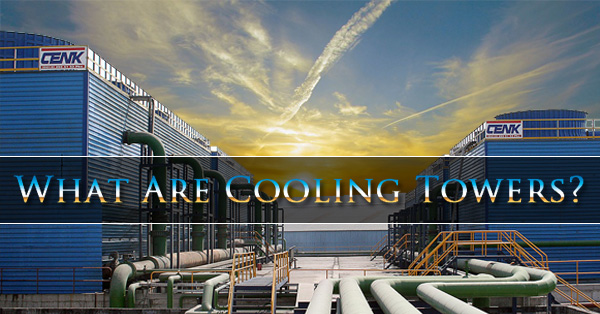
What Are Cooling Towers?
Cooling towers are devices used to take heat out of a system. These heat rejection devices do this by cooling a stream of water that is being channeled from either industrial processes or HVAC systems. Waste heat is removed from the liquid by the cooling tower via different methods. There are dry-bulb and wet bulb type cooling towers that use a different process to cool the liquid in the cooling tower.
Dry-bulb systems rely on a closed circuit cooling tower and operate near the dry-bulb air temperature. Dry-bulb temperature is the reading from a thermometer that is freely to the air but shielded from moisture and radiation.
Wet-bulb systems that rely on evaporation the function of the tower is based on the wet-bulb temperature reading. This takes into account the humidity of the air around the cooling tower.
What Are Cooling Towers Used For?
Common uses for cooling towers include cooling the water used in thermal power stations, oil refineries, chemical plants, petrochemical plants, or HVAC systems that cool large commercial buildings. Depending on the application and location there are two different types of cooling towers. There are two ways that cooling towers channel air through to be cooled, induced draft and natural draft.
Industrial Cooling Towers
Depending on the load of heat being produced by the industrial processes on the site the cooling tower’s size will follow. Industries with a high level of heat that needs to be rejected from the system will have cooling towers like you see used in nuclear power plants. These monolithic structures can stand over 600 feet tall. They are not all that tall, some processes require more than a roof mounted cooling tower that is common in HVAC systems.
Industrial cooling towers reject a tremendous amount of heat. For example a coal burning power plant produces a lot of heat, which requires a lot of water to keep the plant cool. It pipes about 315,000 gallons of water through the system per hour!
The cooling tower theoretically could be cooled with water straight out of a pipe or source of water close to the plant. It would take over 2 million gallons per hour to keep the system cool. That amount of water would have to be returned to the same source of water and taken again from the plant. Clearly with that kind of heated water exchange the temperature of the lake, pond, or river is going to change. If these delicate ecosystems have significant water temperature change it can kill plant and animal life.
With the astronomical levels of heat that industrial processes create clearly rejecting the heat into the air via cooling towers is preferable to destroying eco systems.
Heating, Ventilation & Air Conditioning (HVAC)
Cooling larger commercial buildings is impractical with standard air condoning technology you find in residential applications. These cooling towers are much smaller than industrial cooling towers and are typically found on the roof tops of commercial buildings. The use for cooling towers in HVAC applications is to reject the heat produced by the chiller. The cooling tower works in unison with the water-cooled chiller.
Phoenix Cooling Tower Sales, Maintenance, & Parts
If you have a cooling tower at your building or industrial process, or you are building a new facility Universal Tower Parts can help you at any stage of cooling tower ownership. Give us a call if you need parts, maintenance, or if you are considering investing in a new cooling tower near Phoenix, AZ.
